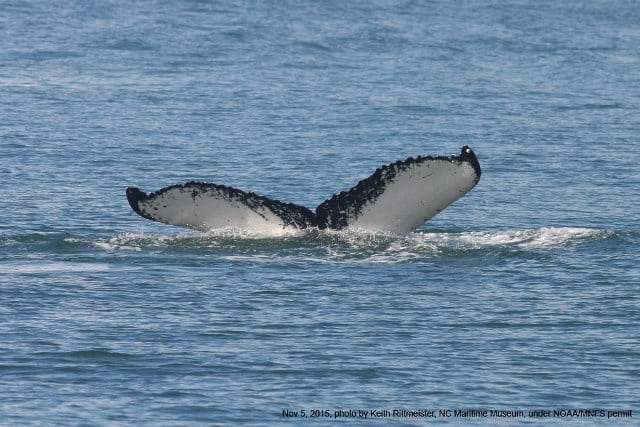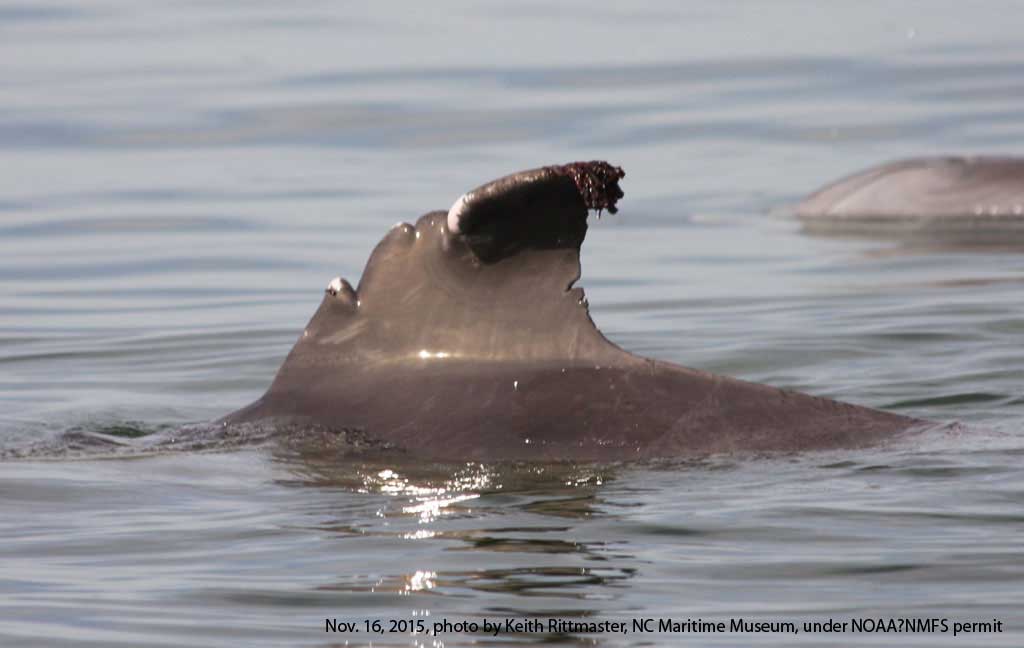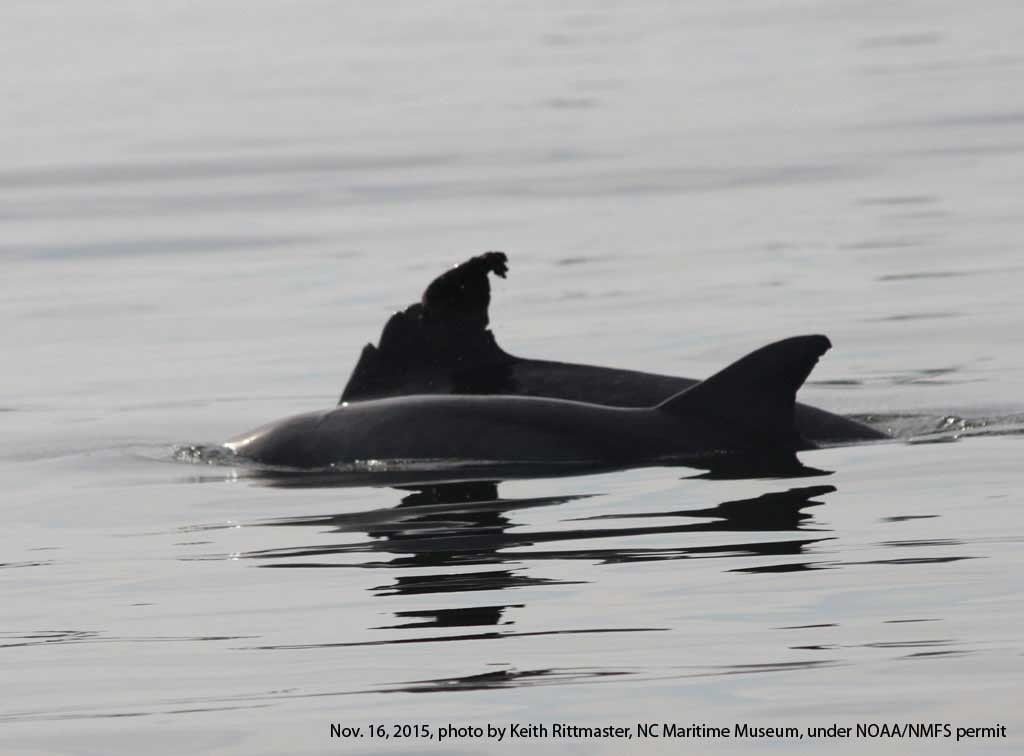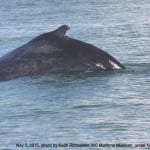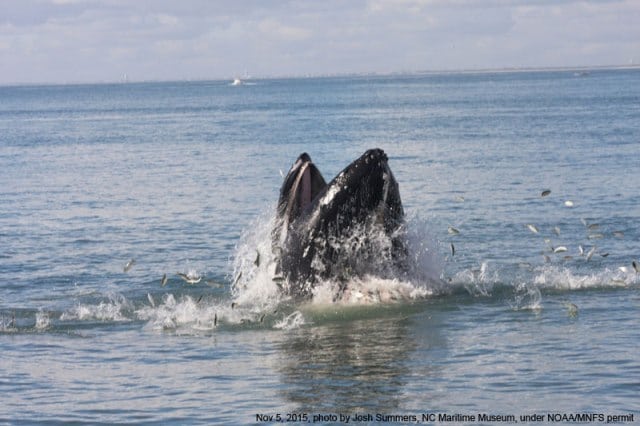
The changing seasons bring new visitors to our waters here on the North Carolina Crystal Coast…
This time of year we anticipate sightings of our “winter” atlantic bottlenose dolphins arriving for their annual stay. Seldom do we encounter other species near shore, so the recent sighting of a humpback whale (Megaptera novaeangliae) was an unusual treat.
In the western North Atlantic ocean, humpback whales feed during spring, summer, and fall in a range that encompasses from western Greenland south to the mid Atlantic region of the eastern coast of the United States. Their preferred diet consists mainly of krill and small schooling fish species.
In winter, whales from the North West Atlantic migrate to subtropical/tropical waters to mate and calve. Not all whales migrate south every winter however, and significant numbers of animals are found in mid- and high-latitude regions at this time.
Similar to all baleen whales, adult humpback whale females are larger than adult males, reaching lengths of up to 60 feet (18 m). Their body coloration is primarily dark grey, but individuals have a variable amount of white on their pectoral fins and belly. This variation is so distinct that the pigmentation pattern on the undersides of their “flukes” is used to identify individual whales, similar to a human fingerprint. Other markings on the body and fins are useful for identification as well. One of the most distinguishing characteristics for this species is the “humped” dorsal fin for which the species is named.
Once hunted heavily to near extinction levels, populations of humpback whales are increasing and in recovery. The species is a true marine mammal conservation success story.
During our rather lengthy encounter with this animal we were fortunate to witness and record multiple events of “lunge feeding” on large schools of menhaden (another heavily exploited species that is showing signs of a population increase due to a ban on large scale targeted harvesting).
Through some of the photographs taken by the crew of “Spyhop” we have successfully matched this animal to other recent local sightings of north carolina whales, and hope to use them for further whale identification studies.
If you happen to sight a whale, please enjoy the experience in a cautious manner and at a safe distance (see NOAA guidelines). These animals are large, and though peaceful, direct encounters with boats can be dangerous for both humans and whales.
